Last week, we read about the changes in the magazine’s staff when Florence M. Osborne, the first editor, left. This is an exciting moment.I’m reading an issue from George W. Sutton Jr.’s time at Black Mask. Never thought I’d find one. But when you have the right friends, amazing things can happen. And they do, in this issue of Black Mask. Let’s turn the pages of the October 1, 1923, issue and see what wonders await us.
First, though, let’s take a look at
The Cover
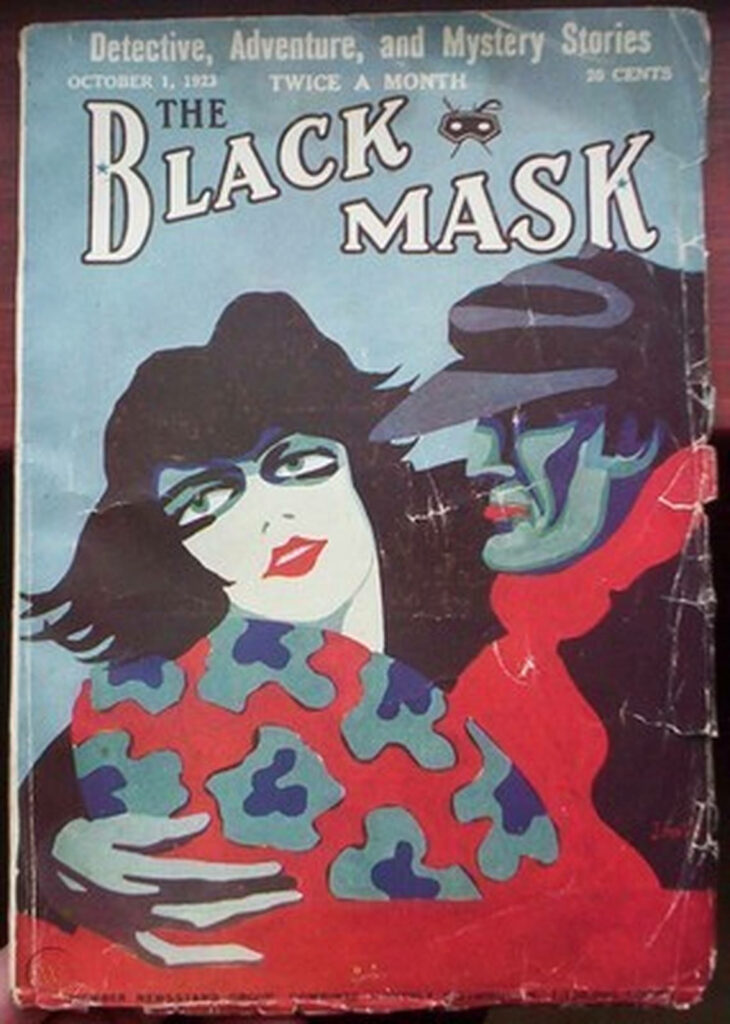
Artist John Decker outdid himself with this cover. Decker, who had worked as a scenery painter in Berlin theatres, emigrated to America in 1921 and worked as a cartoonist for the New York Daily World. Later he went to Hollywood where his quirky sense of humor and high-flying parties won him many actor friends, including Erroll Flynn and John Barrymore, who was his best friend.
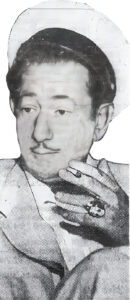
This cover is a mix of modernist styles with muted pastels contrasting with a bright red color reminiscent of poster art. It depicts a lady, possibly masked, in the arms of a man wearing a workman’s cap, a badge of small-time gangsters. Setting the tone for the contents of the magazine, which are remarkably modern when read a century later.
Interior illustrations are not credited but I can see a small B on one of them; and a “St. B” on another; perhaps some reader of this blog can identify them.
Let’s look inside at
The contents
The cover says Detective, Adventure and Mystery Stories. The table of contents says: “A magazine of Adventure, Detective, Mystery, Western and Romantic Stories”. Which one is it? Maybe reading the stories will tell us.
One thing I missed out earlier when looking at the table of contents of the August 1922 issue. It says F. W. Westlake is the secretary and treasurer. Who? Frederick W. Westlake was a vice-president of the Perkins-Goodwin Company, a Canadian paper manufacturer. Did the paper supplier have a stake in the magazine?
New on the staff are George W. Sutton Jr, editor and H. C. North as associate editor. This we know.
On to the
Stories
Even though there’s a Continental Op story in this issue, Dashiell Hammett didn’t get first place. That goes to Newton A. Fuessle (1883-1924), whose The Purple Mask is, for the most part, a remarkably adult story with extra-marital and pre-marital sex as plot elements. A married judge indulges in the former, but balks when he has to provide it as an alibi for the woman who’s suspected of murder. The ending is rather melodramatic and unbelievable by today’s standards, and perhaps even back then. I found the first part good, the second part average.
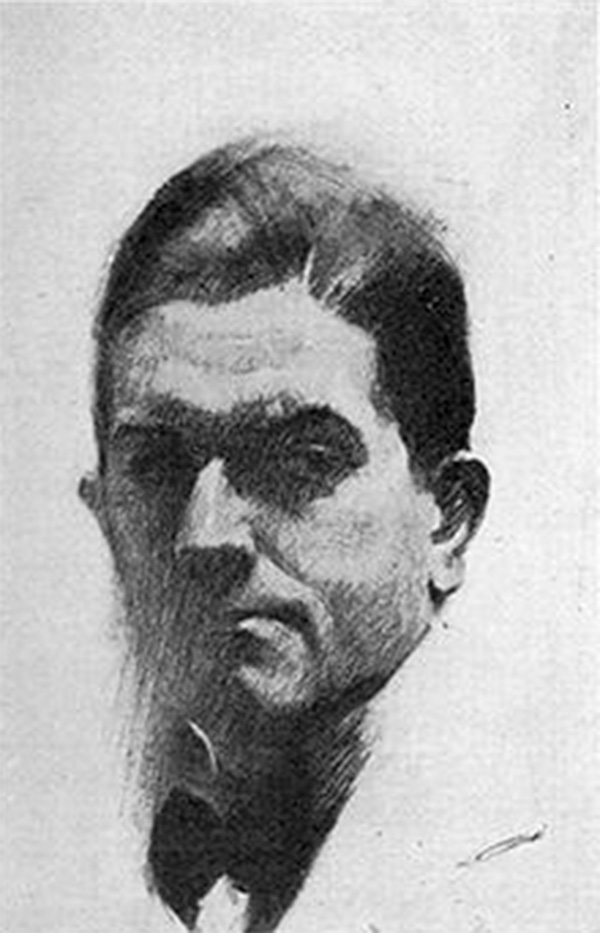
Fuessle was a reporter turned publicity man for Detroit motor companies who also wrote magazine stories. His novels were compared favorably to Theodore Dreiser’s work in his day, but he’s forgotten today.
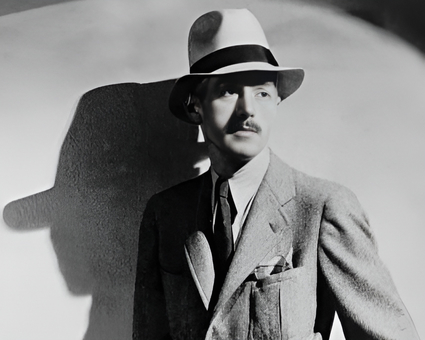
Arson Plus is Hammett’s third story for Black Mask, published under his Peter Collinson pseudonym. I guess Hammett wasn’t sure if he wanted to do only crime stories. It’s also the first story of the Continental Op series, and that makes this a very significant and collectable issue.
The Op is called out of San Francisco to investigate the death of an insured man in a burning building. Every witness tells the same story. But can they be believed? The critical clue turns out to be laundry bills, whose evidence contradicts the witnesses.
The plot is a cliche, the story-telling lifts it above the run of the mill. Hammett talks about the relationship between cops and PIs, the importance of legwork, and the Op’s cynical, wise-cracking, bloodhound on the scent who won’t be thrown off nature is evident right from the start. As an Op outing, it’s average, because Hammett was capable of better plots. Still worth reading once. You can read it here.
The Black Cracksman by John Urban Ayotte(1893-1985) is nominally set in Hawaii, but it really could have been anywhere. A man murders his rich wife to inherit her wealth. He does this disguised as a local burglar who received considerable publicity. Will Justice be served?
Maybe I’ve read too much to find tales like these interesting any more; I felt the plot twist was telegraphed well in advance. Ayotte was an army officer posted in Hawaii, which he used as a setting for his stories.
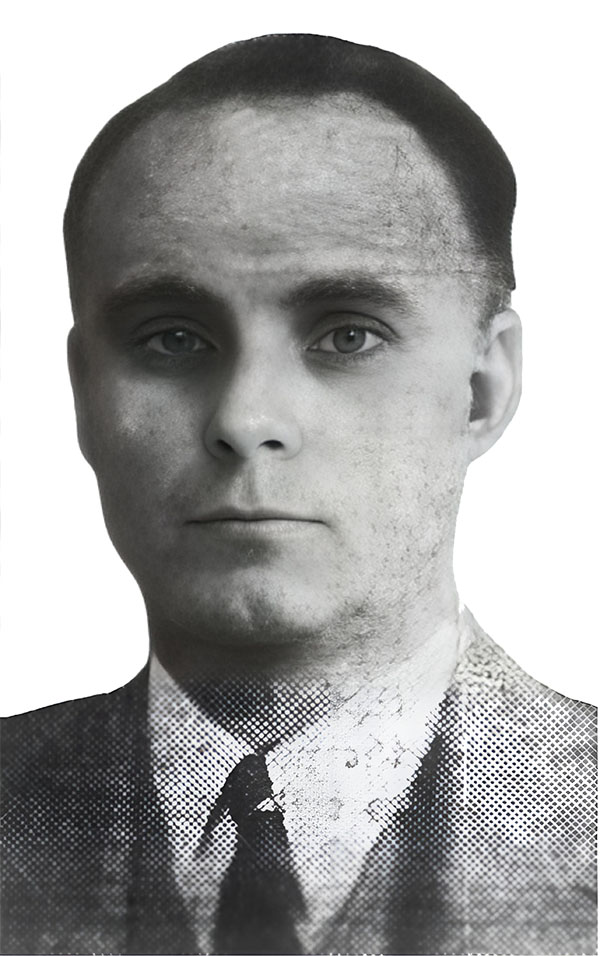
Ray Cummings’ T. McGuirk tries the luck charms tries hard to be funny and charming. For the most part, it fails. The ending is a little better, but it can’t save the story. Contemporary readers must have disagreed, because this is part of a series that ran just over a dozen stories from 1922 to 1926.
Hutch Blood is much better. Texan Robert Willett Stockard(1885-1944) gives us a horror/crime story of two people that are married to each other, hate each other and trying to wait out the other person to get hold of some money. They’re living in an lonely rural house that has seen several unnatural deaths; it’s believed that the original owner was murdered for his misers’ hoard, which was never found. There are unexplained noises and phenomena, the atmosphere is creepy and the ending very good with an unexpected twist.
Stockard, who I hadn’t encountered earlier, had a nearly two-decade career in the pulps, hitting all the top markets: Adventure, Short Stories, Munsey’s, The Cavalier, People’s, Everybody’s and Black Mask.
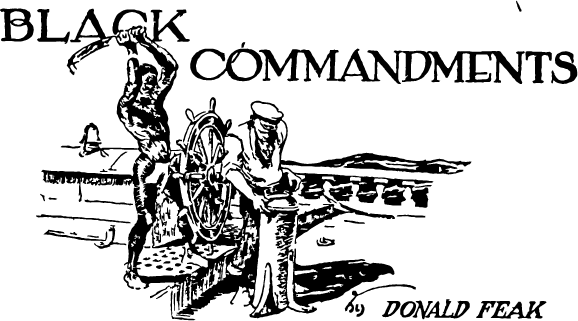
Black Commandments by Donald Feak is disturbingly violent and bloody, racist and thrilling. That’s a combination I didn’t expect to find when I started reading it. It opens with a ship sailing into the Santa Cruz Islands, a group of dots located between Papua New Guinea and Fiji on the world map. The captain is a native “trader”, looking to hire locals as indentured labor who were going to be treated little better than slaves. His son is along for his first trip, his initiation into the “trade”.
Neither the native chief nor the captain show any concern for the people being hired, they’re treated like so much cattle with a value per head. The relationship between the trader and the chief is one of mutual distrust, and either will cut the other’s throat for the smallest gain. That’s a surprisingly realistic portrayal of both sides.
As the trading goes on, the ship’s crew become more and more suspicious of the chief and men. When they leave, the ship’s crew relaxes a little, but the chief and his men turn around and try to board the ship. A pitched battle follows between the ten members of the ship’s crew and the chief and his men, who outnumber them ten to one but have no guns.
Rivers of blood flow, bodies pile up, the trader’s head is cut off by the chief and the son goes berserk. He sits in the crow’s nest, armed with a rifle and shoots anyone who shows the slightest bit of flesh. The only remaining crew member is Boma; described as a “half-breed”. In the racist parlance of the day, that meant that he had some Caucasian blood in him.
The story is all about whether Boma will stay on the son’s side or revert to his “native savagery”. The ending is pretty gruesome. Did I say thrilling already?
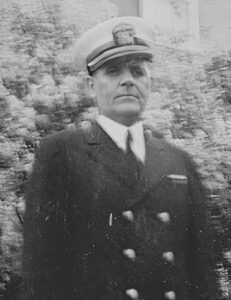
Clifford Donald Feak Sr (1897-1963) was a naval officer who served in both world wars. He wrote, unsurprisingly, sea stories for Argosy, Flynn’s, Black Mask and Sea Stories.
Robert Russell is shrouded in anonymity but I have a guess to who he is. Robert Russell, in dime novel days, was a pseudonym of Will B. Schwartz, to whose life I couldn’t find a single clue. Couldn’t a dime novelist work in the 1920s? Greggs overreaches is a story of a gentleman adventurer thief told in florid dime novel style. Skip it.
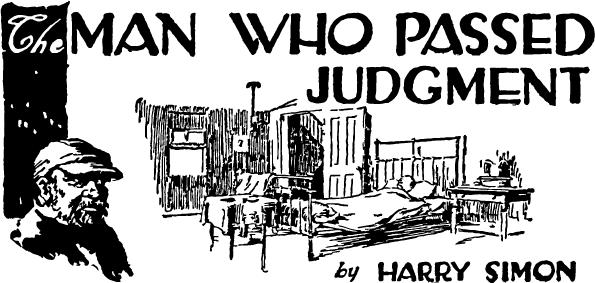
The Man who passed Judgement is pretty good. Harry Simon, the author, was a sailor in the Navy but this is not a sailing yarn. A story of a homeless, mentally disturbed man walking the streets of New York and how he got there; it’s well-written, the characters come to life and the denouement is very believable.
Charles Somerville’s The Sleepless Eye is an instalment of The Manhunters, a true crime series with a police procedural element. A love triangle between a young woman, her ex-boyfriend who would continue harassing her after her marriage, and the older man who she married could only resolve itself with death. Can read or leave it alone.
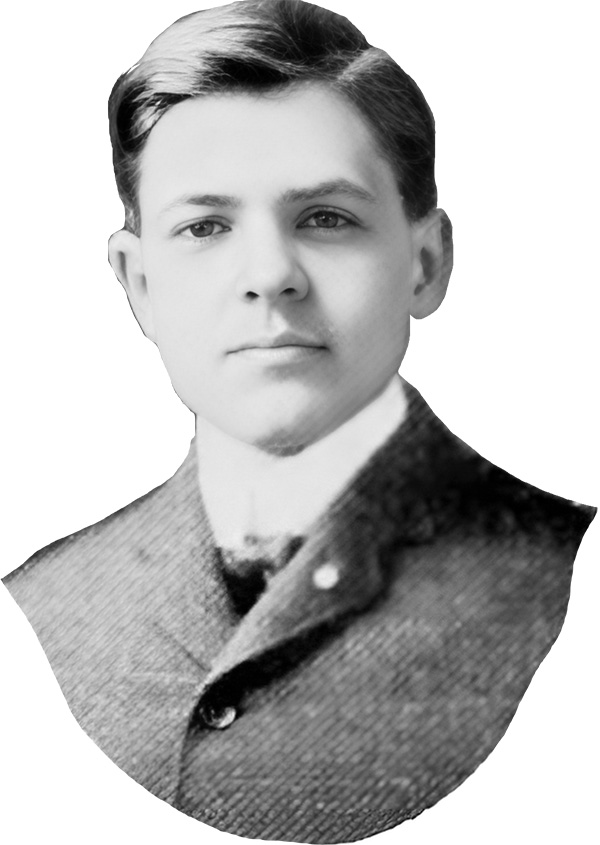
Eustace Hale Ball’s Grandfather’s Will has an interesting first half and a melodramatic climax that’s right out of Dash Hammett’s Arson Plus. It’s a fairy tale with Cinderella, the wicked stepson and his evil wife and cruel daughter and a grand old grizzled grandfather whose wealth the wicked family covets. Plus a lost daughter and her handsome prince of a son, the real heir to the wealth. This story might qualify as the romantic element hinted at in the table of contents.
Crime Review, also by Charles Somerville, is an attempt to find the funny side of crime and punishment that fails dismally.
In The Armchair Detective, Robert Lee Heiser gives us two stereotyped Jewish businessmen from Ohio who’re visiting Baltimore to purchase bootlegged booze. They attract the attention of a “hotel creeper”, a burglar who climbs into and out of hotel rooms to grab the guests’ valuables. He’s done this plenty of times earlier but this time, the police take it seriously. Where The Continental Op used laundry bills to find the criminal, in this story the lead detective looks at all hotel registers to find the real crook. Some funny bits.
Dealers in Death by French born Henry W. Fisher(1855-1932) is a single page vignette on the deadly fates of the inventors and users of the guillotine.
Reader’s Choice
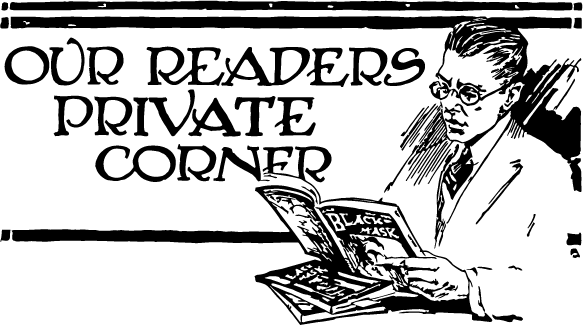
There’s a letter column with letters from authors and readers. Hammett’s letter is about Arson Plus and how he’s decided to keep his detective nameless. John Ayotte describes his writing methods, Harry Simon tells the background of his story, Beyond Want. Robert Lee Heiser says the Armchair Detective is a real person and the story is based on an incident from life.
The readers mostly approve of the magazine, but each has distinct complaints as well. One thinks the covers are absurd, another doesn’t care for the horror element, yet another says the stories “have a tendency lately to run toward the style of Methodist Sunday School Stories”. One praises Carroll John Daly.
Two letters mention the August KKK issue. One says it’s all padding and did they not have enough money to buy fiction? Another says that the criticism of the KKK by Charles Somerville is unbalanced and vicious. What did he think the KKK was, a businessmen’s social relaxation group?
Any Last Words?
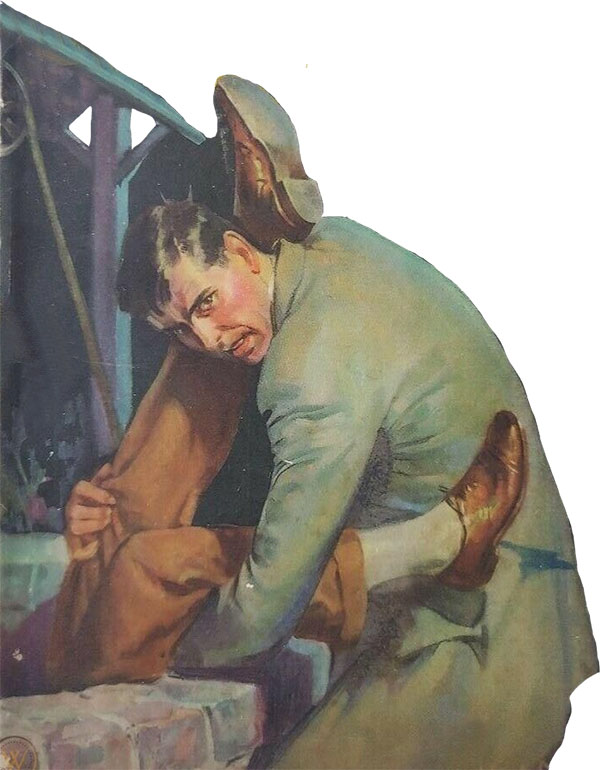
This is an interesting issue of Black Mask. Many readers and fans consider the early issues of Black Mask mostly unreadable, but I’m finding plenty to like here, not just Hammett and Daly. Adventure, detective, horror and crime/mystery is a good mix. No westerns in this issue and the romance is out of place; perhaps an attempt to lure women readership. A few duds but that’s to be expected. The letter column makes the magazine lively and gives it a human touch.

Next week, we take a look at Philip Cody and his gunslingers.